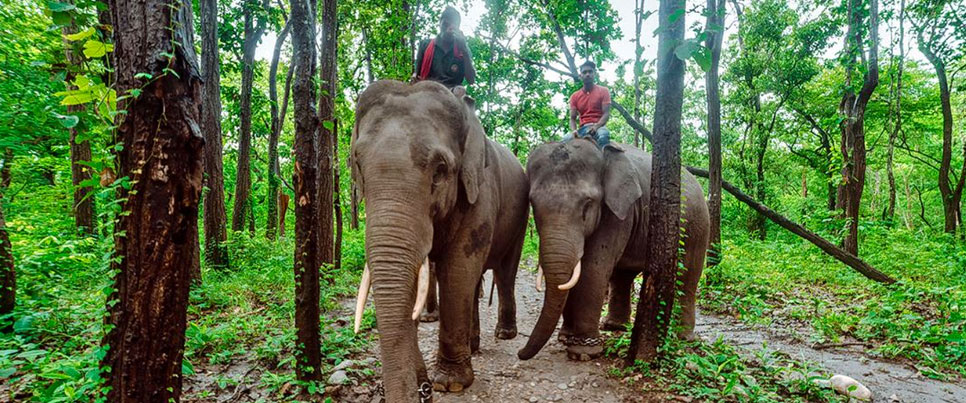Flora in Valmiki Tiger Reserve
Valmiki Tiger Reserve, distinguished by the Champion and Seth forest classification, boasts seven unique forest types, creating a haven for nature enthusiasts. The reserve's diverse topography and soil conditions nurture a rich variety of vegetation, primarily encompassing Bhabar Dun Sal Forest, Dry Siwalik Sal Forest, West Gangetic Moist Mixed Deciduous Forest, Cane Brakes, Khair Sissoo Forest, Eastern Wet Alluvial Grassland, and Barringtonia Swamp Forest. This botanical diversity adds to the allure of Valmiki Tiger Reserve, making it a special destination that showcases the intricacies of different ecosystems for those who appreciate the wonders of nature.

Trees
In the valley areas of Valmiki Tiger Reserve, noteworthy tree species include Sal (Shorea robusta), Karam (Adina cardifolia), Asan (Terminalia tomentosa), Bahera (Terminalia balerica), Asidh (Lagerstroemia parviflora), Simal (Salmalia malabarica), Satsal (Dalbergia latifolia), and more. The hilly regions, in addition to Sal, showcase Piyar (Buchanania lanzan), Mandar (Dillenia aurea), Banjan (Anogeissus latifolia), Bhelwa (Semecarpus anacardium), Harra (Terminalia chebula), Bodera (Eugenia operculata), among others. This diverse array of tree species enhances the ecological richness of Valmiki Tiger Reserve, contributing to its significance in preserving varied habitats and fostering biodiversity.
Bamboo
Cane breaks predominantly thrive in the Madanpur Forest block, serving as a favourable habitat for Tigers. The presence of cane is notable in moist areas along the various nalas within the Madanpur Range. Additionally, there exists a small isolated patch of Chirpine forest in the Rajhia Forest Block. It is noteworthy that Chirpine forest typically occurs at altitudes ranging from 4000 ft. to 5000 ft., yet in this instance, it is observed between altitudes of 1000 ft. to 1700 ft., showcasing a unique and distinct characteristic.
Grasses
Valmiki Tiger Reserve is adorned with a variety of grasses, including Munj (Saccharum munja), Kans (Saccharum spontaneum), Elephant grass (Typha elephantina), Narkat (Phragmites karka), Vetiver (Vetiveria zizanioides), Imperata cylindrica, Choranth (Heteropogon contortus), Sabai (Eulaliopsis binata), and more. Climbing plants are also abundant in VTR, with common species like Mahulan (Bauhinia vahlii), Mahai (Butea parviflora), Panilat (Vitis repanda), Ramdatwan (Smilax parviflora), and Arar (Acacia pinnata). The reserve is home to numerous medicinal plants, including Satawar (Asparagus racemosus), Safed Musli, Dudhkoraiya (Holarrhena antidysenterica), Amla (Emblica officinalis), Piper (Piper longum), among others. This diverse vegetation adds to the ecological richness of Valmiki Tiger Reserve, supporting various plant species and contributing to the overall biodiversity of the region.